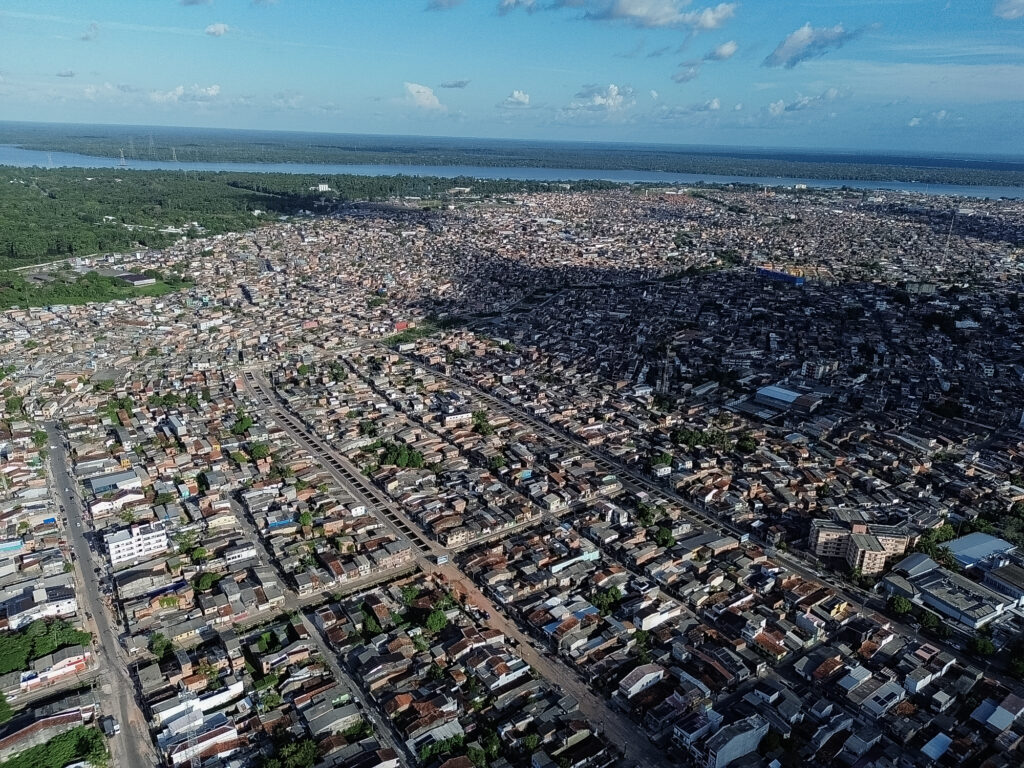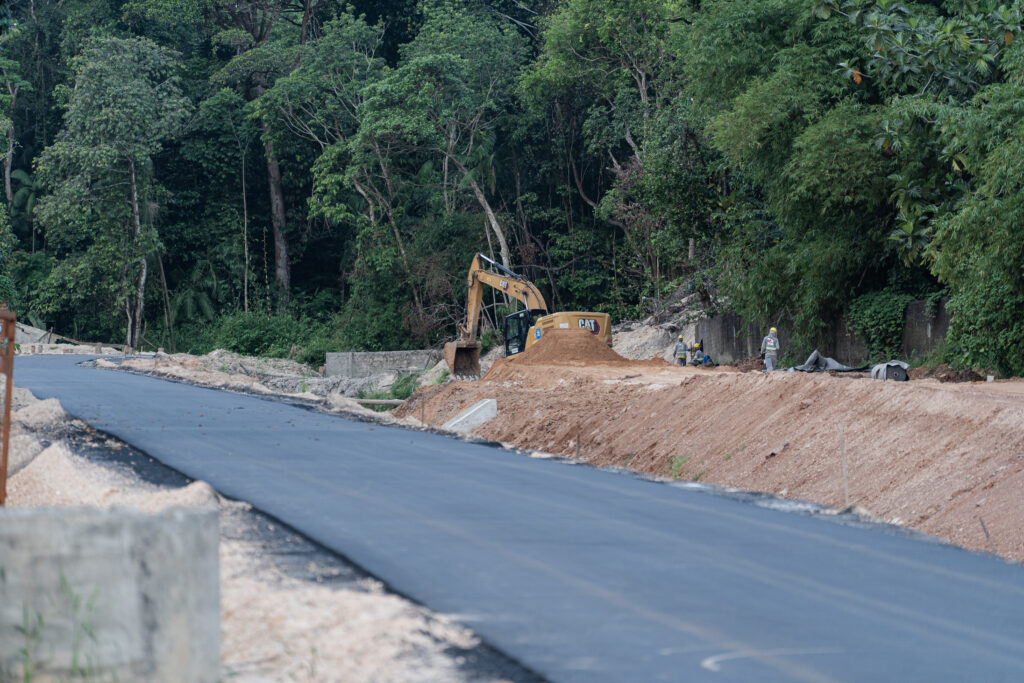The Amazonian Paradox

As the world’s attention turns to Belém, the gateway to the Brazilian Amazon and host of COP30, journalist Daniel Nardin has a front-row seat to history in the making.
With nearly two decades of reporting on environment, health, and climate, he is a member of the Oxford Climate Journalism Network and founder of Amazonia Vox, a platform amplifying local voices and solution-driven journalism from the region. In this conversation, Nardin shares his insights on the challenges of hosting a global summit in a region rich in biodiversity but poor in infrastructure, and why storytelling from the Amazon matters now more than ever.
You live in Belém, the host city for COP30. What’s the atmosphere like as the summit approaches?
It’s very lively here. Everyone is talking about COP30, on television, radio, and social media. People are excited and also a bit anxious because it’s a huge event for our city. Belém will welcome around 50,000 people in just two weeks, which is no small challenge.
We had some problems at first, especially with accommodation. Prices for hotels and rentals were very high compared to other cities that hosted previous COPs, but things are improving now. The Brazilian presidency of the COP announced that more than 190 countries have confirmed delegations, and there will be thousands of journalists, activists, and civil society members arriving soon.
So, maybe it won’t be “the COP of the COPs,” as the official slogan says, but it will certainly be an important one. Now that logistics are mostly sorted, I hope we can finally move from discussions about hotels and prices to real climate negotiations. Expectations are high, and that can bring frustration, but there is also real hope in the air.
According to what I’ve heard from the COP Presidency, the accommodation issue has been partially resolved. Some delegations reduced their teams, countries that would usually send six negotiators might now send only two or three. That allows everyone to have representation, but it also creates a challenge.
Imagine several meetings happening at the same time. With fewer negotiators, delegations can’t be present everywhere. Sometimes they’ll have to say, “Sorry, the expert for this topic isn’t here, we’ll have to discuss it later.” That slows down progress.
At the same time, the people of Belém have come up with creative solutions. Local churches launched a platform called “Accommodation with Purpose,” where families open their homes to visitors as an act of solidarity. Many residents are renting rooms through Airbnb and Booking.com as well. Prices are now lower than they were five months ago, but we’re only a few weeks away, so it’s still a tight situation.

You often talk about the “Amazonian paradox.” What does that mean?
The Amazon is one of the richest regions in the world in terms of biodiversity and natural resources. But at the same time, it’s one of the poorest when it comes to infrastructure, education, and basic public services. Around 30 million people live in the Brazilian Amazon, yet indicators for health, education, and sanitation are well below Brazil’s national average, and Brazil itself lags behind wealthier nations.
Belém illustrates this paradox perfectly. COP30 is called the “COP of the Forest,” but actually the city is the second-least-forested capital in Brazil. The downtown area is famous for its huge mango trees, Belém is even nicknamed Cidade das Mangueiras, the city of mango trees, but once you go to the outskirts, you barely see any trees at all.
In the last forty years, the city’s maximum temperature has risen by about two degrees Celsius. Despite being surrounded by rivers, about 60 percent of residents don’t have access to clean, reliable water. That’s the Amazonian paradox, a region that sustains the planet but struggles to sustain its own people.
When people think of the Amazon, they think of the forest. How serious is deforestation right now?
Deforestation remains our biggest environmental challenge, not just for the Amazon but for Brazil as a whole. Unlike countries such as China or the United States, Brazil’s main emissions don’t come from industry or energy generation. Most of our electricity is renewable, coming from hydropower, solar, and other sources. Our emissions come from land-use change, that means cutting down or burning forests for agriculture.
This creates two problems at once, we lose trees that absorb carbon and burning releases even more carbon into the atmosphere. During President Lula’s first government, deforestation dropped significantly. Then, under President Bolsonaro, the numbers rose again. Now, with Lula back in office and Marina Silva as Minister of the Environment, they are falling once more, but still at high levels.
Last year, 2024, was the worst on record for Amazon fires according to MapBiomas, a Brazilian research platform. It was the year when the Amazon burned the most in history. That wasn’t just politics, it’s the effect of climate change. Higher temperatures and more deforested, drier land make the forest extremely vulnerable to fire.
Protecting Indigenous territories is one of the most effective ways to reduce deforestation. We see that these areas are far better preserved than others. Strengthening them is not charity, it’s climate policy.
Some infrastructure projects in Belém, such as Avenida da Liberdade, have drawn criticism. Are they linked to COP30?
This project isn’t new; it’s been discussed for nearly 20 years. Belém has a population of about one million people but only one main road in and out of the city. So, the idea of building another avenue has existed for a long time.
What happened is that the government finally found money to do it because of COP30. The summit became a reason, or an excuse, some might say, to unlock federal funding. So, it’s not being built because of COP30, but thanks to it.
Of course, there’s controversy. The construction site includes areas of native vegetation, and some people question why a “COP of the Forest” is cutting down trees. So, while the project might improve local mobility, it also raises uncomfortable questions about priorities and environmental trade-offs.

Recently there’s been criticism of new offshore oil exploration near the mouth of the Amazon River. Why is it controversial?
The discovery was made a few years ago. The exploration site lies about 500 kilometres off Brazil’s northern coast, right where the Amazon River meets the Atlantic Ocean. Scientists warn that if something goes wrong, an oil spill could affect the Amazon delta and its fragile ecosystems.
The controversy is political as much as environmental. On one hand, Brazil wants to lead the global transition to renewable energy. On the other, it’s pursuing new fossil fuel projects in one of the planet’s most sensitive areas. That’s a contradiction.
Government officials, including Brazil’s COP30 president, say it’s an “internal discussion” and avoid clear answers. Meanwhile, environmental groups and many scientists oppose the project, while local politicians argue it will bring jobs and money. It’s a classic example of short-term economic hopes clashing with long-term environmental risk.
How are Indigenous communities being represented in COP30 preparations?
For the first time in history, Brazil has a Ministry of Indigenous Peoples, led by Sônia Guajajara, an important activist and voice in the climate debate. This is a big step forward. The government also created advisory councils that include Indigenous representatives to provide input for the COP.
Between 4,000 and 5,000 Indigenous people are expected to attend COP30 in Belém, many hosted by the Federal University of Pará. Some will participate in official negotiations, while many others will demonstrate in the streets. Brazil is a democracy that allows peaceful protest, and I believe Belém will see strong and colourful mobilisations.
In previous COPs held in countries with stricter laws, there was little space for public demonstrations. Here, Indigenous voices will be heard both inside and outside the conference halls, and that’s healthy for democracy.
Finally, do you think hosting COP30 in the Amazon will truly help the region?
I’m an optimistic journalist, and a realistic one. I don’t believe COP30 will solve everything, but it’s already making a difference.
Just the fact that we’re having this conversation is proof. You’re in Europe, I’m in Belém, and we’re talking about the Amazon for half an hour. Many people listening might never have heard these realities before. That awareness is already part of the legacy.
COP30 won’t be the final COP, it’s part of a process. The global context isn’t easy, wars, economic crises, adaptation pressures everywhere. But keeping the Amazon in the global spotlight, before and after COP30, is essential. The region has been treated as a resource warehouse for 500 years. Now it’s time to see it as home, a place of people, cultures, and solutions.
Before we finish, tell us about Amazonia Vox.
Of course. In Portuguese we say, “hora de vender meu peixe”, time to sell my fish!
Amazonia Vox is a platform for solutions journalism in the Amazon. We focus on stories that show how local people are addressing local problems, whether it’s climate adaptation, sustainable farming, or education. We’ve also built a database of more than 1,500 local sources, scientists, Indigenous leaders, activists, so journalists anywhere can find and contact real voices from the region.
We’ve grown into a community of over 800 communication professionals, journalists, photographers, web designers, and storytellers. Our goal isn’t to be the biggest outlet, it’s to strengthen local protagonism and ensure Amazonian stories are told by those who live here.
And if anyone listening wants to follow us, we’re on LinkedIn and Instagram, and at amazoniavox.com.